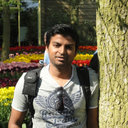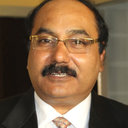Colonoscopic polypectomy. North Indian experience.
Cuvinte cheie
Abstract
Colonoscopic snare polypectomy was carried out in 70 patients (40 children, 30 adults). There was a male preponderance in both the groups with a combined male: female ratio of 4.4:1. The majority of patients (85%) were aged 20 years or below. All patients presented with intermittent bleeding per rectum, ranging from 2 months - 6 years (mean 1.2 +/- 1.1 years) in children and 1-14 years (1.9 +/- 2.3) in adults. The majority of patients polyps were located in the rectum (73%) or in the rectosigmoid region (21%). Polyps were significantly more common in the rectum (80% vs 63%; P less than 0.01) and less frequent in the rectosigmoid (15% vs 30%; p less than 0.01) in children as compared to adults. A single polyp was present in 49 (70%) patients; 17 (24%) had 2-10 polyps, while 4 patients (2 children, 2 adults) had more than ten polyps. Most patients (94%) had polyps of less than 2 cm size. Histologically, the most polyps (91.5%) were of the juvenile variety; 39 (97.5%) children and 25 (83%) adults had this variety of polyp. The remaining 5 (17%) adults and one (2.5%) child had adenomatous polyps. The difference in the polyp histology between the two age groups was statistically significant (p less than 0.05). Only one patient (1.4%) had excessive bleeding following polypectomy. The present study suggests two important differences in the nature of polyps as compared to the West: 1) our patients were much younger, and polyps were rare after 40 years; and (2) histologically, the commonest polyps were of the juvenile variety (91.5%) while adenomatous polyps were rare (8.5%).



